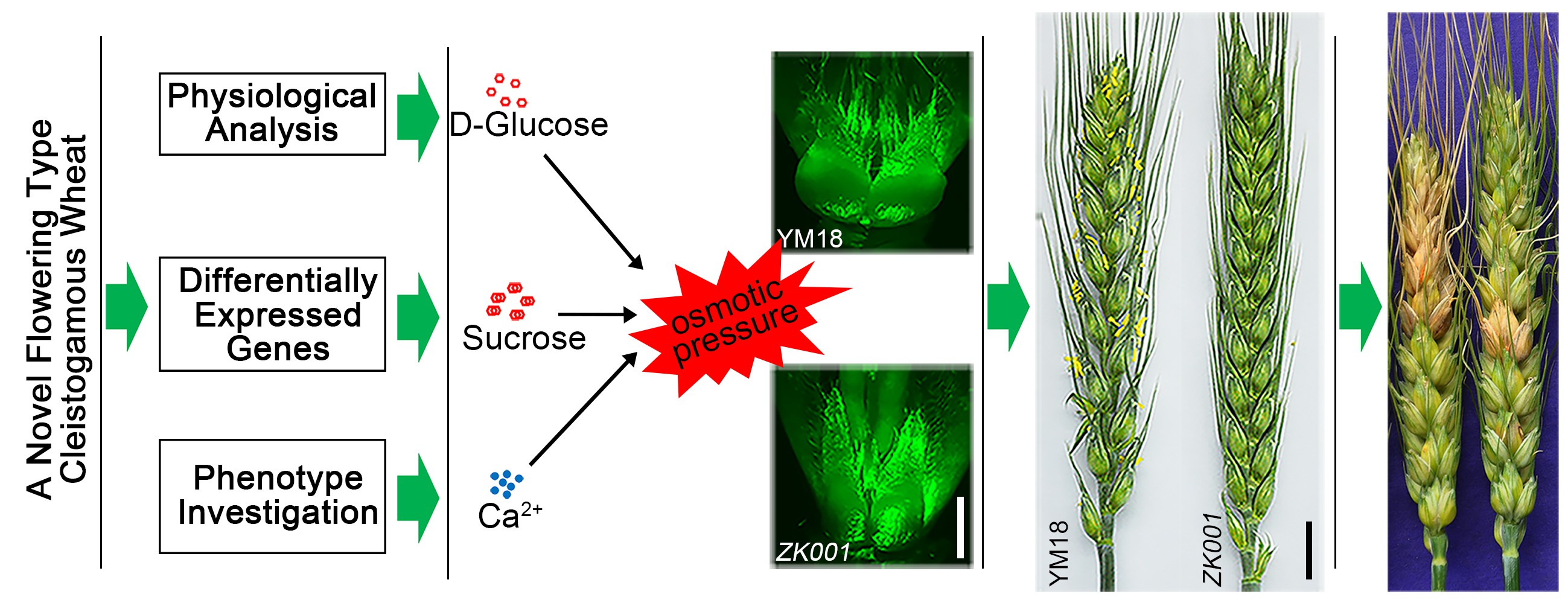
Recently, Prof. WU Lifang and her team from Hefei Institutes of Physical Science found a novel type of wheat which had a lower Fusarium head blight (FHB) infection rate. They also revealed its mechanisms by using transcriptome analysis.
Wheat (Triticum aestivum L.) is one of the most important staple crops worldwide. Wheat Fusarium head blight (FHB), also called scab, is caused mainly by Fusarium graminearum and is one of the most destructive fungal diseases of wheat worldwide. Infected wheat kernels contain deoxynivalenol (DON, also called vomitoxin), which is harmful to human and animal health. Therefore, it is urgent to find eco-friendly and cost-effective strategies as well as to develop new scab-resistant wheat cultivars
At present, however, there is no popularization of wheat cultivars with high resistance to FHB in wheat production. “We found cleistogamous wheat ZK001 (Zhongke 0101, CNA20150325.7), which was a novel flowering type of wheat, had a lower FHB infection rate than its parent cultivar Yumai18. But little is known about the mechanism of cleistogamy in wheat,” said WU Lifang.
In their study, phenotypic analysis showed thin lodicules of ZK001 lose the ability to push the paleae and lemmeae apart, and anthers of ZK001 were retained on the glumes at all flowering stag-es.
Comparative transcriptome analysis of YM18 and ZK001 was performed to identify regulatory mechanisms of cleistogamy. The main differentially expressed genes identified in the spikelets of YM18 and ZK001 at the green anther stage were associated with cell walls, carbohydrates, phytohormones, water channel, and ion binding, transport, and homeostasis.
These differentially expressed genes may play an important role in regulating cellular homeostasis, osmotic pressure, and lodicule development.
This study has important theoretical research and application value for the study of flower development, disease and pest prevention mechanism and the application of molecular breeding in wheat.

An overview of the potential mechanisms for a novel flowering type (Image by TANG Caiguo)

86-10-68597521 (day)
86-10-68597289 (night)

52 Sanlihe Rd., Xicheng District,
Beijing, China (100864)

